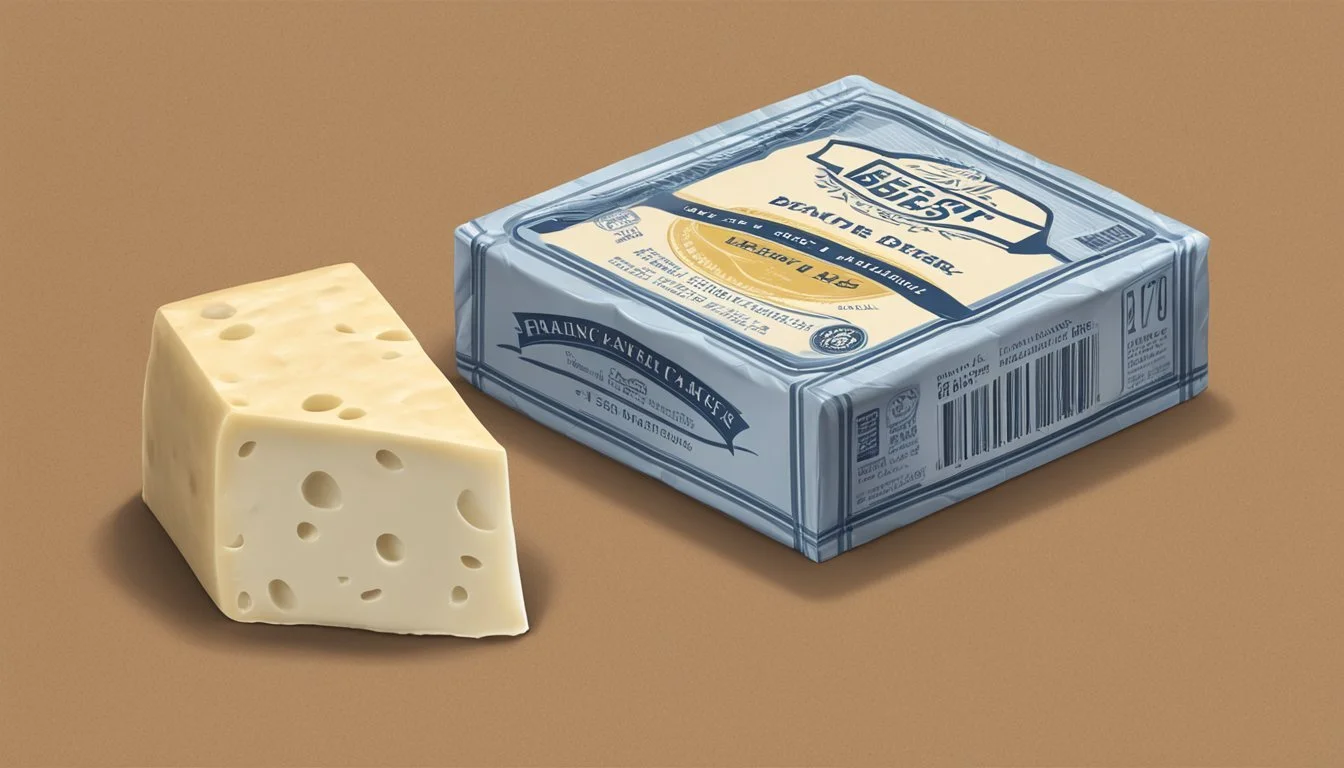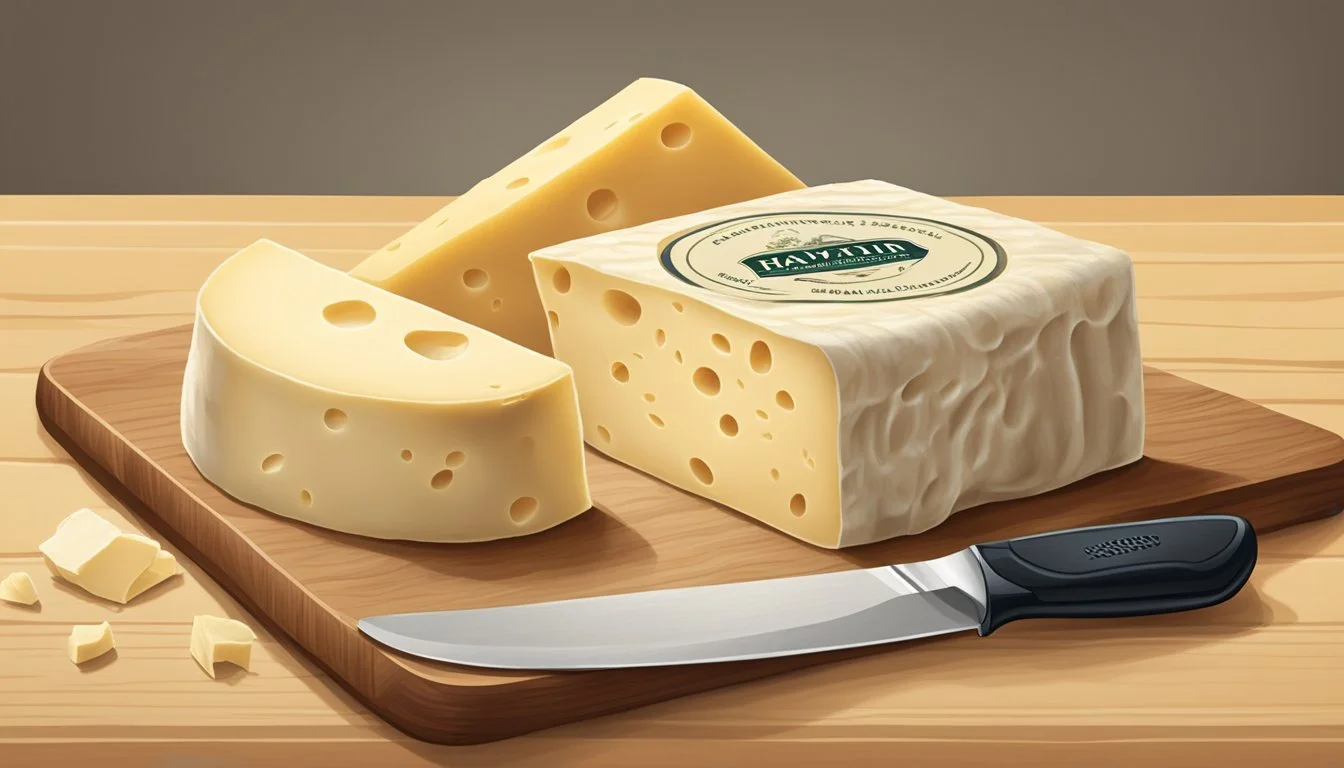How Long Does Havarti Last?
Unveiling Cheese Preservation Tips
Havarti cheese, a semi-soft Danish cow's milk cheese, is renowned for its creamy texture and mild, buttery flavor which can range from sweet to slightly acidic. It's an adaptable cheese often found on cheese boards, melted in sandwiches (What wine goes well with sandwiches?), or incorporated into various recipes. The shelf life of Havarti cheese is a key consideration for both retailers and consumers, as it influences not only the culinary experience but also food safety.
When stored correctly in the refrigerator, unopened Havarti can last up to two months. This period ensures that the cheese maintains its desirable qualities, including the supple texture and the subtle flavors that Havarti is known for. Once opened, the cheese's exposure to air and potential contaminants is increased, and it is recommended to consume Havarti within two to three weeks. Proper storage practices, such as sealing the cheese tightly after each use, play a crucial role in preserving its freshness and extending its shelf life.
Understanding Havarti Cheese
Havarti cheese is lauded for its creaminess and mild flavor, making it a versatile addition to many dishes.
Characteristics of Havarti Cheese
Havarti is a semi-soft cheese that originated from Denmark. It's known for its creamy texture and mild, buttery flavor, which can range from slightly tangy to very sweet depending on how long it is aged. The cheese's creaminess is a result of the high-fat milk used in its production. Traditional Havarti is typically aged for around three months.
Havarti may contain small, irregular "eyes" or holes throughout its body, a result of the cheesemaking process. Its elasticity and meltability make it suitable for both cold and hot dishes, from sandwiches to fondues.
Nutritional Profile
Havarti provides important nutrients as part of a balanced diet. Below is a nutritional overview of Havarti cheese based on a serving size of 1 ounce (28 grams):
Nutrient Amount per serving Calories 120 Total Fat 10g Saturated Fat 6g Cholesterol 30mg Protein 6g Sodium 180mg Calcium 200mg
It should be noted that while Havarti is a good source of protein and calcium, it also contains a high amount of saturated fat. Those monitoring their saturated fat or sodium intake should consume Havarti in moderation.
Storage Fundamentals
Proper storage is key to maximizing the lifespan of Havarti cheese. Paying attention to temperature, humidity, and packaging can greatly influence the quality and safety of the cheese.
Ideal Storage Conditions
Havarti cheese should be stored at a consistent temperature between 35°F (2°C) and 40°F (4°C). These conditions closely mimic those of a refrigerator’s environment. Cheese retailers often suggest using an airtight container or vacuum-sealing to preserve Havarti's quality. It is best kept in the original packaging when unopened or rewrapped tightly if opened to minimize air exposure.
Temperature: 35°F - 40°F (2°C - 4°C)
Container: Airtight, whether original packaging or rewrapped
Humidity: Moderate (like that found in a usual refrigerator)
Effects of Improper Storage
Havarti cheese exposed to temperatures above 40°F may encourage the growth of harmful bacteria, which can spoil the cheese. If the cheese is left out at room temperature for more than two hours, it risks being unsafe to eat. Not using an airtight container increases the risk of Havarti drying out and losing its intended flavor and texture due to air exposure.
Temperature above 40°F: Risk of bacterial growth and spoilage
Exceeding 2 hours at room temp: Potential to turn unsafe
Improper packaging: Leads to drying out and flavor loss
Shelf Life Determinants
When considering the shelf life of Havarti cheese, it's essential to acknowledge how aging affects quality and to recognize the signs of spoilage. These factors are critical in determining how long the cheese maintains freshness and edibility.
Impact of Aging on Quality
As Havarti cheese ages, its character changes. Aging can enhance the cheese's flavor and texture; however, there's an optimal threshold for aging, beyond which the quality of Havarti may start to degrade. Typically, unopened Havarti—when stored correctly in a refrigerator—can last up to two to three months, maintaining its quality. The aging process is halted if the cheese is frozen, but this can alter the cheese's texture.
Optimal Aging Period:
Freshness retained up to 2-3 months for unopened Havarti
Signs of Spoilage
Havarti displays several signs when it begins to spoil. First and foremost, the presence of mold growth is a clear indication that Havarti has gone bad. Spoiled cheese may also emit a foul odor, which differs from its naturally mild scent. The texture of Havarti can become slimy or overly hard, signifying that it's no longer fresh.
Spoilage Indicators:
Mold Growth: Visible spots or fuzz
Odor: Sour or unpleasant smell
Texture: Uncharacteristic sliminess or hardness
Consumers should trust these indicators along with the expiration date on the packaging to determine if Havarti cheese is still suitable for consumption. It is always advisable to discard any cheese that shows signs of spoilage.
Freezing Havarti Cheese
When it comes to long-term storage of Havarti cheese, freezing is a viable option that can extend its shelf life by several months.
How to Freeze Havarti
To successfully freeze Havarti cheese, one should follow these steps:
Wrap the cheese in cling film or aluminum foil to protect it from air exposure.
Place the wrapped cheese into a freezer-safe bag or container to isolate it from moisture and odors.
Label the bag or container with the current date to monitor how long the cheese has been stored.
Freeze the packaged Havarti at 0°F (-18°C) for optimal preservation.
Using this method, Havarti can remain frozen for up to 3 to 6 months.
Thawing Frozen Havarti
Thawing Havarti cheese requires careful attention to preserve its quality:
Refrigerate: Transfer the frozen Havarti from the freezer to the refrigerator and let it thaw slowly, ideally overnight. This gradual process helps maintain the cheese's texture and flavor.
Room Temperature: For quicker thawing, one can place the cheese at room temperature for a few hours before consumption. However, this should be used sparingly to avoid any textural degradation.
It's important to consume thawed Havarti promptly to enjoy its full taste and creamy texture.
Preventing Foodborne Illness
When storing and handling Havarti cheese, it is crucial to prevent foodborne illness by recognizing the signs of spoilage and understanding the health risks associated with consuming spoiled cheese.
Recognizing Spoiled Havarti
One should inspect Havarti cheese for any changes in texture or appearance. Safe Havarti should be uniform in color and consistency. If the cheese develops a slimy texture or appears discolored, these could be indicators of bacterial growth. Additionally, an off odor that is not typical for this type of cheese is a tell-tale sign that Havarti may no longer be safe to consume.
Health Risks of Consuming Bad Cheese
Ingesting spoiled Havarti can lead to foodborne illness, with symptoms that might include nausea, vomiting, diarrhea, and abdominal pain. These symptoms can manifest anywhere from a few hours to days after consumption, varying in severity. Bacteria such as Salmonella, Listeria, or E. coli are common culprits when it comes to foodborne illness and can cause significant health risks. It is imperative to consume cheese within its safe shelf life and to store it properly to mitigate these risks.
Usage & Serving Ideas
Before diving into the myriad ways one can employ Havarti cheese, it's important to note its versatility. Havarti's creamy texture and buttery taste make it an excellent fit for a range of recipes and pairings, from sandwiches to sophisticated cheese platters.
Culinary Uses of Havarti
Havarti cheese boasts a smooth consistency that allows it to melt beautifully, making it an ideal choice for grilled cheese sandwiches and pasta dishes (What wine goes well with pasta dishes?). Its mild flavor complements the richness of casseroles (What wine goes well with casseroles?) and can enhance the overall taste of recipes without overpowering other ingredients.
Sandwiches: Havarti's meltability is perfect for grilled cheese sandwiches, and it can also be sliced for cold sandwiches, offering a creamy counterpoint to meats and veggies.
Casseroles: It can integrate seamlessly into the layers, melting into the heart of the dish.
Pasta Dishes: Whether it's a creamy sauce or a baked pasta, Havarti's gooey texture binds ingredients deliciously.
Recipes: Incorporate it into quiches (What wine goes well with quiche?) or frittatas for an effortlessly gourmet touch.
Pairing Ideas with Havarti
When it comes to serving Havarti, one can play with different combinations to bring out its flavor. It pairs well with a variety of foods, including crackers, salads, and ingredients meant for charcuterie (What wine goes well with charcuterie?) boards.
Crackers: The creamy nature of Havarti provides a soft contrast to the crispness of assorted crackers.
Salads: Shave Havarti over greens for a touch of creaminess.
Grilled Cheese Sandwiches: Pair with robust bread like sourdough to craft an unforgettable sandwich.
Charcuterie Boards: Accompany Havarti with fruit jams, nuts, and dried fruits to enhance its creaminess with sweet and savory notes.
When serving Havarti, it's essential to consider the balance of flavors and textures to create a delightful culinary experience.
Online stores offer unbeatable prices for charcuterie boards so don't miss out!
Disposal and Re-Purposing
Storing Havarti cheese properly extends its life, but eventually, it may need to be discarded. If it's past its prime, it shouldn't be wasted as there are creative ways to repurpose leftover cheese.
When to Discard Havarti
One must discard Havarti cheese when:
It has been left out at room temperature for more than two hours.
There is visible mold that cannot be fully removed by cutting around the affected area.
It emits an off or sour odor, indicating spoilage.
The texture has become excessively dry or slimy.
Creative Uses for Leftover Cheese
Leftover Havarti cheese, while not fresh enough for direct consumption, can still be salvaged for cooking. Here are some recipe ideas:
Melt into sauces: Enhance the flavor of a basic white sauce or a cheese sauce for pasta.
Bake into dishes: Add it to casseroles, quiches, or stuffed bread for a creamy texture.
Enhance soups: Stir into soups for a richer consistency.







